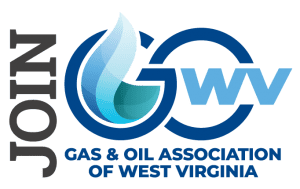- by Wilson Harvey, Exponent Telegram
MORGANTOWN — With the future in mind, WVU began the Marcellus Shale Energy Environmental Laboratory (MSEEL) project last June, a study meant to give a look at the hydraulic fracking process over five years with an $11 million price tag.
The study was done in collaboration with The Ohio State University, the National Energy Technology Laboratory, and Northeast Natural Energy, the company operating the wells.
After the first year, those around the project say that it has put the state at the forefront of the research across the globe.
“It’s been a big success,” said Brian Anderson, professor of chemical engineering and director of the WVU Energy Institute. “The two production wells were drilled last fall, along with a scientific observation well.
“Everything went swimmingly. Of course, some of the schedules were changed with the rain last June, but it was really a huge success during the stimulation drilling in the early part of the test.”
Anderson said he has spoken about the impact of the project in China, and that delegations from Colombia and Mexico have visited regarding the project already. Delegations from Morocco and Lithuania are also planning to visit this summer.
“It puts us in a unique position to lead in this globally,” he said.
In the opinion of Charlie Burd, executive director of the Independent Oil and Gas Association of West Virginia (IOGA), there is no doubt that West Virginia should be leading the charge for new information.
“We should be at the cutting edge, we should be at the forefront, because the largest natural gas reserves in the world lie under Monongalia County, combined with Marcellus and Utica,” he said. “Hundreds of years of natural gas supply lies there. It is only appropriate that this would be the place such information would be garnered.”
One of the major reasons for the prominence of the project is its high levels of transparency, Anderson said.
“Really, all the data will be publicly available to researchers around the world to try and improve processes,” he said. “In our early stages, we called it the ‘transparent well project,’ because the goal is to make the data transparent to the public.”
Anderson also said the ability to study the impact of fracking on water quality and to help with the design of future technology to improve the fracking process make the study unique.
According to Anderson, the fracking process can be improved in many ways, several of which the project seeks to address. One of these is the amount of gas taken from each well.
“Even as advanced as the technology is today, we still only get back 20 percent of the gas that’s in the reservoir,” he said. “If we can get back more of the gas from a given reservoir, we can increase the energy from one well and lower the impact footprint on the environment of having multiple wells. It improves the recovery efficiency.”
Burd said that in the current industry climate, such information is crucial to success.
“When you’ve got depressed pricing like we have now, the information gain on how to more efficiently drill and produce wells is something that the industry desperately needs to know,” he said. “For the first time, West Virginia is at the top of the heap in providing this kind of pioneering research data that will be used across the globe in terms of how you drill and produce horizontally.”
According to Anderson, much of the information being delivered and analyzed from the well site right now is the product of a fiber optic cable that is continuously sending data from the 7,000-foot-deep well. The information relayed via the cable, which he noted includes temperature and fluid calculations, can help to build predictive models and thus aid in efficiency.
“One of the really exciting things about this project is that we did the drilling last year, and we have an opportunity to crunch all the numbers and build models for the surface,” he said. “Here in a couple years we can have a redesigned fracking process, where we’ve learned about the subsurface and can redesign technology and such.”
The program also has studied the impact of the well site on air quality and on the various water sources surrounding it, including the Monongahela River, Anderson said. Research of the latter, when paired with the transparency of the project, will provide an important result for oil and gas, Burd said.
“I believe we’ll find without a doubt that these wells are being drilled safely and with every environmental concern possible being assessed and analyzed, and that horizontal wells being drilled across the country are not degrading our water supplies as those who oppose us would allege,” he said. “And that in itself will help this industry.”
The reason the project is a positive for the oil and gas industry is largely due to the organizations involved, Burd said.
“This is a win-win situation,” he said. “You have the Department of Energy involved. You have an outstanding petroleum and natural gas engineering university involved in WVU, a great research institution in The Ohio State University, and an outstanding company in Northeast Natural Energy offering up a site.”
It is the team of characters involved that Burd said will give oil and gas a strong report to stand behind.
“What you come to find is that if the industry does this on their own, environmentalists can’t wait to shoot holes in the findings you report,” he said. “In this case, you have the Department of Energy and two renowned universities participating in the process.
“So for the industry, it’s the perfect storm for us.”

